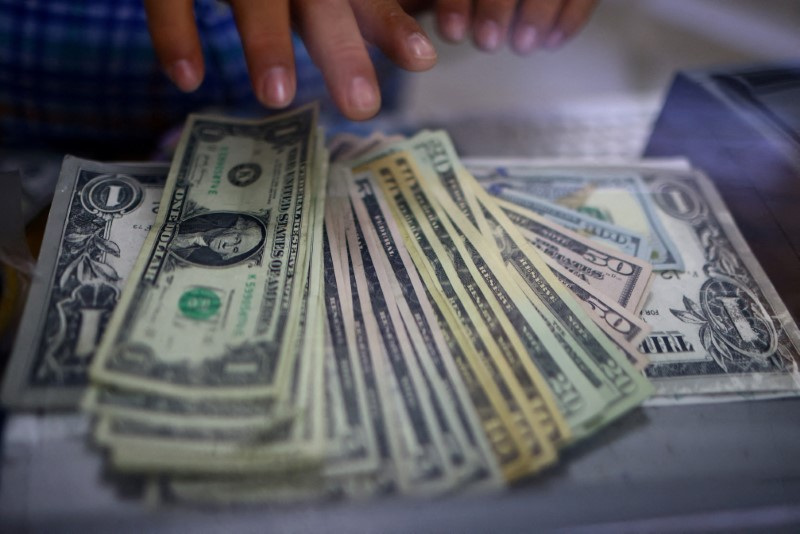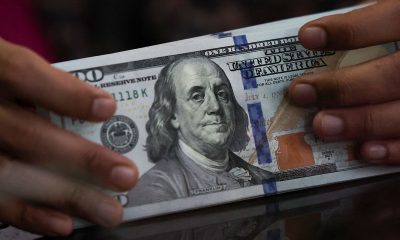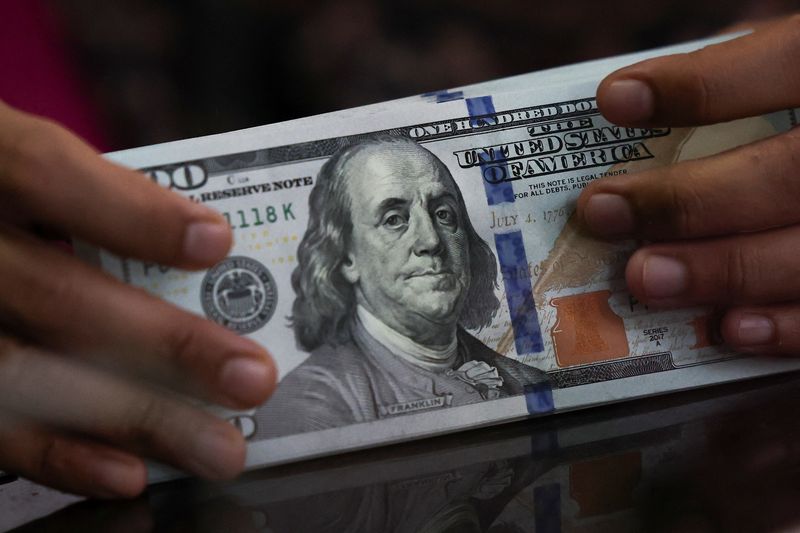Forex
Column-Long dollar bets explode, as funds join the dots: McGeever

By Jamie McGeever
ORLANDO, Florida (Reuters) – Looked at through a currency market lens, the verdict from hedge funds on the recent wave of major central bank policy meetings could not be clearer – don’t bet against the mighty dollar.
The latest Commodity Futures Trading Commission data show that speculators are going ‘all in’ on a stronger dollar, particularly against G10 currencies, and especially the Japanese yen and Swiss franc.
Figures for the week through March 26 show that speculative CFTC accounts increased their net long dollar position against a range of G10 and emerging currencies to $13.5 billion, the highest since September 2022.
The net long position against G10 currencies was even higher at $17.64 billion, a level not seen since July 2022. In both cases, most of the surge has come in the last few weeks during which time the Federal Reserve, European Central Bank, Bank of Japan and Swiss National Bank all held policy meetings.
From a relative rates perspective, the dollar has emerged the victor. Fed policymakers lifted the median ‘dot plot’ and long-run neutral rate projections, the BOJ’s historic rate hike was deemed to be ‘dovish’, the ECB could ease policy before the Fed, and the SNB was the first major central bank to cut rates.
Even those who are more gloomy on the dollar’s longer-term prospects recognize its relative attraction in the short term.
“The bar remains high … to boost the dollar substantially, but signs of continued economic resilience in the US could still keep the greenback on the front foot in the short term,” Capital Economics senior economist Jonathan Peterson wrote last week.
YEN, SWISSIE CARRY THAT WEIGHT
Speculators appear to agree.
In the week through March 26 they increased their net short yen position to 129,106 contracts, CFTC data show. That’s close to the 132,000 contracts net short in February which was funds’ biggest bet against the yen in over six years.
A long position is essentially a bet that an asset will rise in value, and a short position is a wager its price will fall.
Funds have increased their net short yen position in nine of the last 11 weeks, the two outliers being in the run up to the BOJ’s historic rate hike in March.
CFTC funds’ short yen position is now worth $10.65 billion and the renewed bearishness is probably one of the reasons the Japanese currency last week hit a 34-year low against the dollar.
CFTC data also show hedge funds grew their net short Swiss franc position in the latest week to the largest in almost five years. It now stands at 22,627 contracts, a bet worth more than $3 billion – both are the highest since June 2019.

Funds also continued to reduce their net long euro position which now stands at 31,194 contracts, a $4.2 billion bet on the euro appreciating. Both are the smallest since September 2022.
(The opinions expressed here are those of the author, a columnist for Reuters.)
(By Jamie McGeever; Editing by Chizu Nomiyama)

 Forex3 years ago
Forex3 years agoForex Today: the dollar is gaining strength amid gloomy sentiment at the start of the Fed’s week

 Forex3 years ago
Forex3 years agoUnbiased review of Pocket Option broker

 Forex3 years ago
Forex3 years agoDollar to pound sterling exchange rate today: Pound plummeted to its lowest since 1985

 Forex3 years ago
Forex3 years agoHow is the Australian dollar doing today?

 Cryptocurrency3 years ago
Cryptocurrency3 years agoWhat happened in the crypto market – current events today

 World3 years ago
World3 years agoWhy are modern video games an art form?

 Commodities3 years ago
Commodities3 years agoCopper continues to fall in price on expectations of lower demand in China

 Economy3 years ago
Economy3 years agoCrude oil tankers double in price due to EU anti-Russian sanctions
























